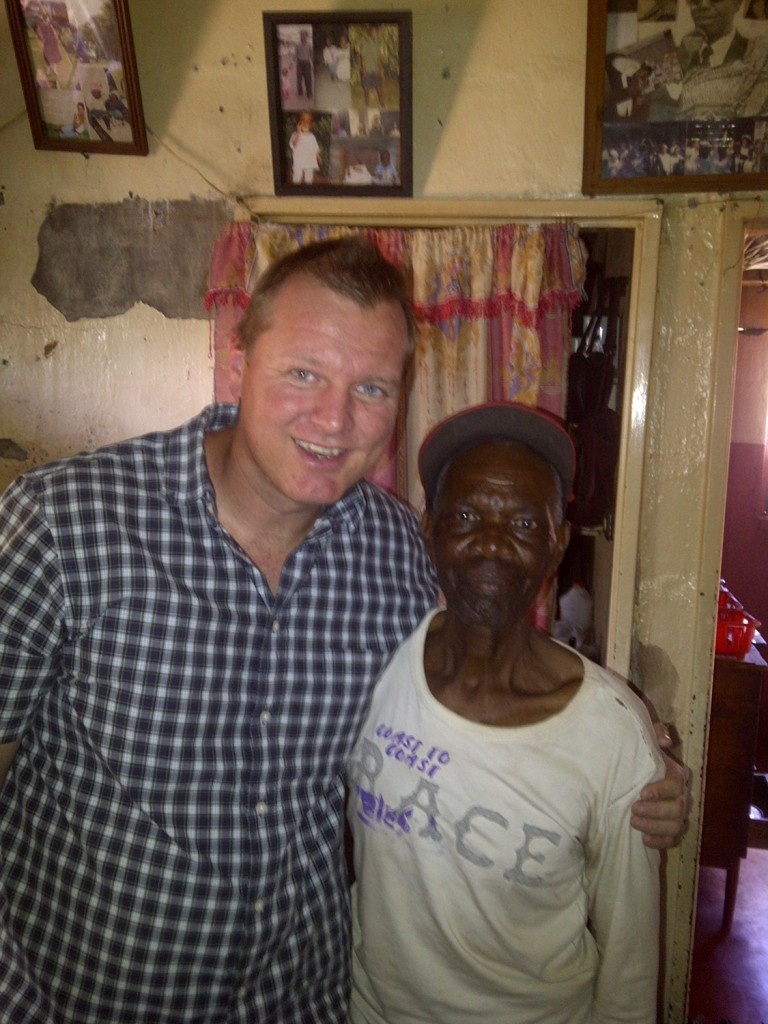 They are War Veterans, yes, but not as we normally hear of them in this region. They are Freedom Fighters too, but not the Freedom Fighters that fought for Zambia’s independence. These are the men who fought for the freedom that allowed the Freedom Fighters to fight for Zambia’s independence. These are the Zambian’s who fought in the British Forces in World War II in North Africa, in Burma, in India.
They are War Veterans, yes, but not as we normally hear of them in this region. They are Freedom Fighters too, but not the Freedom Fighters that fought for Zambia’s independence. These are the men who fought for the freedom that allowed the Freedom Fighters to fight for Zambia’s independence. These are the Zambian’s who fought in the British Forces in World War II in North Africa, in Burma, in India.
Little is known about our Zambian soldiers who served in the British Army with great loyalty during both the 1st World War from 1914 to 1918 and the 2nd World War from 1939 to 1945. The Northern Rhodesia Regiment as part of the Kings African Rifles served the British Army right up until Zambia’s independence on 24 October 1964 and then became part of the Zambia Army.
The Zambian soldiers fought in many famous battles around the world and it is from these battles that our Zambian barracks around the country have got their names. For example, Tug Argan barracks are named after a place in Somalia where the 1st Northern Rhodesia Regiment went into battle with the Italian forces where it was estimated that the Italians army out numbered the British forces ten to one. It is here that the Kings African Rifles earned its first Victoria Cross for bravery. The Victoria Cross is Britain’s highest medal awarded for valour and bravery beyond the call of duty. Kohima barracks is named after a town in India; Chindwin barracks are named after the ChindwinRiver, Arakan barracks after a hard fought campaign area in Burma and Mawlaik and Kalewa Barracks named after towns in Burma. Over half a million African troops, among them 14,580 from Northern Rhodesia, served with the British Army as combatants and non combatants in campaigns in the Horn of Africa, the middle East as far as Iraq, Italy, Burma, Malaya, Singapore and Japan. Some of the Zambian soldiers even found themselves amongst the British Army forces in Poland, whilst other Zambian soldiers were part of the occupation British Peace Keeping force sent to Tokyo, after Japan’s surrender in September 1945.
The British recruited the tallest and healthiest looking Zambian men for the army. Chiefs were told to give ten of their best men. Others were recruited from towns and markets. Towards the end, when there was a shortage of manpower in the army, Zambian men were recruited from schools. The British recruiting officer would enter a school in the morning with a height ruler and any students above a certain height were instantly recruited whether they liked it or not. Most of them never got a chance to even say goodbye to their parents before being sent for training in Lusaka and Livingstone.
The Zambian soldiers really made a name for themselves as part of Montgomery’s 8th Army. A mixture of soldiers from different regiments of the British and African forces in North Africa, the 8th Army went up against one of the best fighting forces of the 2nd World War. Some of the Zambian War veterans who live in Luanshya speak of the famous German General Erwin Rommel (The Desert Fox) and his German army, the Afrika Korps, as some of the hardest and toughest soldiers they had ever had to fight. Many Zambian soldiers are buried in unmarked graves in North Africa.
After that the Kings African Rifles were taken to secure the Island of Madagascar from the Vichy French, who were on the side of Germany, as it was feared they might allow the Japanese Imperial navy, after the fall of Singapore, to use Madagascar as place from which to attack British shipping off the coast of Africa. After the campaign, Madagascar was restored to the Free French.
In 1943 the Kings African Rifles was sent to face its most deadliest enemy yet, the Japanese Imperial Army in Burma. The Zambian soldiers did so well in North Africa that the British Army called upon the regiment, once again, to fight in the jungles of Burma. It is interesting to note that there were more casualties due to malaria in the jungles of Burma than from the
We have been unable to establish whether any assistance is being rendered by the Royal Commonwealth Ex-Services League, a British based charity, through the Zambian Ex-Servicemens League or whether there is none forthcoming at all from that source. We are also still trying to trace all the Veterans from World War II who are still alive today. But whilst this is ongoing, if you feel you would like to make life a little easier for these heroes please drop off any blankets, old clothes or tinned foods at The Lowdown offices for distribution as and when we find our War Veterans. They are national heroes. So let us honour them and take care of our old Zambian warriors.

Warrant Officer Daimon Mwete fought in Somalia, Egypt, Tunisia, Madagascar, Burma, Malaya, Singapore and Japan. He served from 1939 to 1960

Lance Corporal Benson Nkonde fought in North Africa, Tunisia, Egypt, Somalia, Ethiopia, Madagascar, Poland, Iraq, Burma, Singapore and Malaya


Leave a Reply
You must be logged in to post a comment.